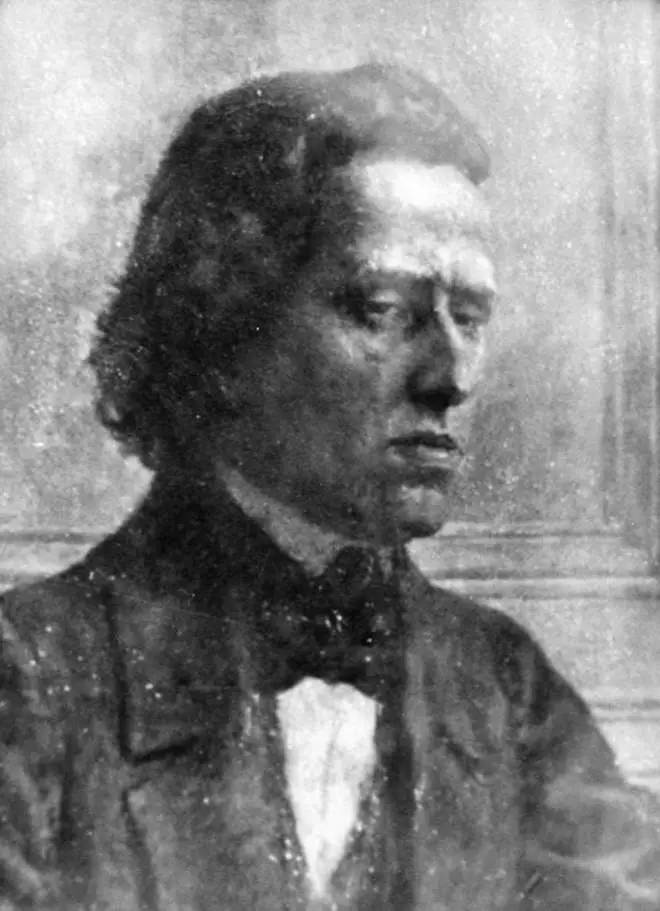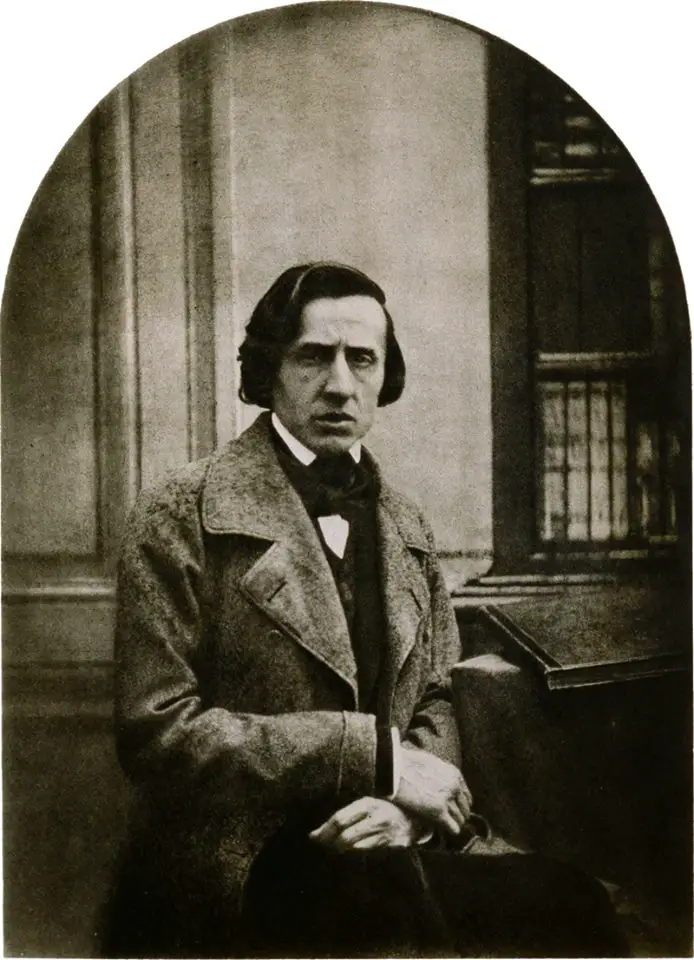Two researchers, Dr. Alain Kohler, a Swiss physicist, and Gilles Bencimon from Radio France Internationale, a passionate musician, have discovered an unpublished photographic portrait of Frédéric Chopin, the Polish composer and virtuoso pianist of the Romantic era. According to the researchers, it was certainly performed in 1847 in the studio of the 19th-century French photographer Louis-Auguste Bisson (1814–1876). So, this daguerreotype (a photograph taken by an early photographic process employing an iodine-sensitized silvered plate and mercury vapor) would be only the third known photographic portrait of the composer. The photo was discovered in a private individual’s home.

Chopin (1 March 1810 – 17 October 1849) wrote primarily for the solo piano. He gained and has maintained renown worldwide as a leading musician of his era, whose “poetic genius was based on a professional technique that was without equal in his generation.” Chopin was born in what was then the Duchy of Warsaw and grew up in Warsaw, which in 1815 became part of Congress Poland. A child prodigy, he completed his musical education and composed his earlier works in Warsaw before leaving Poland at the age of 20, less than a month before the outbreak of the November 1830 Uprising.
At 21 he settled in Paris. Thereafter, during the last 18 years of his life, he gave only some 30 public performances, preferring the more intimate atmosphere of the salon. He supported himself by selling his compositions and by teaching piano, for which he was in high demand. Chopin formed a friendship with Franz Liszt and was admired by many of his musical contemporaries, including Robert Schumann. In 1835 he obtained French citizenship. After a failed engagement to Maria Wodzińska, from 1837 to 1847 he maintained an often troubled relationship with the French woman writer George Sand. A brief and unhappy visit to Majorca with Sand in 1838–39 was one of his most productive periods of composition. In his last years, he was financially supported by his admirer Jane Stirling, who also arranged for him to visit Scotland in 1848. Through most of his life, Chopin suffered from poor health. He died in Paris in 1849, at the age of 39, probably of tuberculosis.
All of Chopin’s compositions include the piano. Most are for solo piano, though he also wrote two piano concertos, a few chamber pieces, and some songs to Polish lyrics. His keyboard style is highly individual and often technically demanding; his own performances were noted for their nuance and sensitivity. Chopin invented the concept of the instrumental ballade. His major piano works also include mazurkas, waltzes, nocturnes, polonaises, études, impromptus, scherzos, preludes and sonatas, some published only after his death. Influences on his composition style include Polish folk music, the classical tradition of J. S. Bach, Mozart and Schubert, the music of all of whom he admired, as well as the Paris salons where he was a frequent guest. His innovations in style, musical form, and harmony, and his association of music with nationalism, were influential throughout and after the late Romantic period.
Chopin’s music, his status as one of music’s earliest superstars, his association (if only indirect) with political insurrection, his love life and his early death have made him a leading symbol of the Romantic era in the public consciousness. His works remain popular, and he has been the subject of numerous films and biographies of varying degrees of historical accuracy.

Louis-Auguste Bisson (1814–1876) was a 19th-century French photographer. He opened a photographic studio in early 1841. Soon after, his brother Auguste-Rosalie Bisson (1826–1900) entered into partnership with him. Their studio was in the La Madeleine in Paris, and they became famous as the Bisson Brothers.
In 1860 they accompanied Napoleon III on his visit to Savoy. The pair produced remarkable images of the local scenery. Having received an encouraging response to his work, the following year Auguste ascended Mont Blanc, taking with him twenty-five porters to carry his equipment.
The brothers refused to reduce their images to the carte de visite size and, consequently, after four years, they ceased operating their business.
One of the most famous works attributed to this artist is his photograph of composer Frédéric Chopin. The origin of the portrait has never been adequately explained and, subsequently, the image was excluded from the ‘Les frères Bisson Photographes’ exhibition at the Bibliothèque Nationale in 1999.
Sources
- Frédéric Chopin on wikipedia
- Louis-Auguste Bisson on wikipedia
